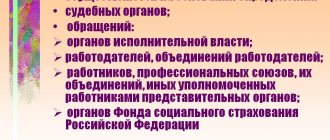Punishment for forgery and forgery of documents and signatures in accordance with Article 327 of the Criminal Code of the Russian Federation
- introducing additional signs;
- replacing a photograph on an identity document;
- falsification of a signature or seal.
- correction of all or part of the information;
- erasing part of the information or completely deleting it;
There are many technical, laboratory and visual methods for identifying counterfeit documents.
shall be punished by forced labor for a term of up to four years or imprisonment for the same term. 3. Use of a knowingly forged document - Commentary on Article 327 of the Criminal Code of the Russian Federation 1.
The object of the criminal attack is the procedure established by law for the circulation of documents, state awards, stamps, seals, forms. 2. Subjects of encroachment - certificates, official documents, state awards, stamps, seals, forms.
Identifying signs that don't change
How to determine how old a document is? The examination uses two approaches for this. The first of them is to identify features that remain unchanged over time. These include the content of the document and its basis, determined by the purpose of the writing instrument used, the characteristics of strokes, technical means and materials.
The ongoing research aims to establish the correspondence of the assignment of signs to a certain time interval. What does the examination of the document's prescription pay attention to in this case? The specialist investigates the discrepancy between the date specified in the text details and the time interval. This approach is very effective if, in a given period, there were significant changes in the range of writing media and materials, as well as in the language.
Thus, an examination of the age of documents may reveal that:
— the provided text uses terms that do not correspond to the date of its compilation (for example, names of departments, organizations, etc.); - on the forms and in the stamps there is information about an organization that was created later or abolished before the specified time; — the contents of the document contain references to events that occurred at another time.
Also, the examination of establishing the age of a document examines the morphology of strokes. Based on the data obtained, we can completely exclude the possibility of handwritten details being made with a ballpoint pen until the forties, and with a gel pen until the seventies. But creating text using electronic typewriters became possible only after the 70s. This is also taken into account by examining how long ago the document was produced.
The composition of materials used to present the text is also subject to research. These are, in particular, dyes in letters and bleaches in paper. Thus, until the fifties, ballpoint pen paste containing phthalocyanine dyes was not used. In addition, until the 60s, domestically produced paper did not contain optical brighteners.
Article for forgery of documents and signatures of the Criminal Code of the Russian Federation: punishment, statute of limitations
Comments on the article for forgery, seals and signatures can be found online on specialized resources and forums. Questions about the composition of the crime and responsibility for it are also considered here.
This is interesting: The appeal was accepted in violation of the 2020 deadline
Plus, many professionals usually advocate expanding the rules by which the criminal nature of forgery and signature actions can be classified. Simply put, the Criminal Code of the Russian Federation should provide for as many cases as possible, because the current version has quite a lot of gaps, which are taken advantage of by attackers (this is evidenced by judicial practice under Article 327 of the Criminal Code of the Russian Federation).
Equipment necessary for conducting an examination of the age of production of a document
To establish how old a document was made, special knowledge in the field of chemistry, forensics and special equipment are required. ANO "Bureau of Forensic Expertise" in Moscow has its own verified and certified equipment - a hardware and software complex based on a chromatograph "Chromatek - Crystal 5000.2", which allows such examinations to be carried out quickly, accurately, in compliance with all requirements and at the lowest price! The Bureau of Forensic Sciences employs forensic scientists and chemical experts with many years of experience in conducting forensic examinations.Certificate of acceptance and verification of the hardware and software complex based on the chromatograph “Khromatek – Crystal 5000.2″
4u PRO
How long is the statute of limitations for falsifying documents?
- The statute of limitations for bringing to criminal liability is provided for in Art. 78 of the Criminal Code of the Russian Federation, According to this provision of the law, a person is exempt from criminal liability if the following periods have expired from the date of commission of the crime: two years after the commission of the crime provided for in Parts 1 and 3 of Art. 327 of the Criminal Code of the Russian Federation (since these crimes are of minor gravity) and six years after the commission of the crime under Part 2 of Art. 327 of the Criminal Code of the Russian Federation - a crime of medium gravity. By the way, the edition of part 2, set out in Andrey Andreev’s answer, is already outdated. Currently, it is as follows: the same acts committed with the aim of concealing another crime or facilitating its commission. The sanction is the same. And as for how to convict... The question is difficult because very little is known about the question. If he forged documents for a purchase, the question is: is there any corpus delicti in his actions at all.
Article 327 of the Criminal Code of the Russian Federation. Forgery, production or sale of counterfeit documents, state awards, stamps, seals, forms. ———————————————————————————
1. Forgery of a certificate or other official document granting rights or exempting from obligations for the purpose of its use, or the sale of such a document, as well as the production for the same purposes or sale of counterfeit state awards of the Russian Federation, the RSFSR, the USSR, stamps, seals, forms -
shall be punishable by restriction of freedom for a term of up to three years, or arrest for a term of four to six months, or imprisonment for a term of up to two years.
2. The same acts committed repeatedly -
shall be punishable by imprisonment for a term of up to four years.
3. Use of a knowingly forged document -
shall be punishable by a fine in the amount of one hundred to two hundred times the minimum monthly wage, or in the amount of the wages or other income of the convicted person for a period of one to two months, or by compulsory labor for a term of one hundred eighty to two hundred and forty hours, or by correctional labor for a term of up to two years. , or arrest for a period of three to six months.
Commentary on Article 327
1. The subject of the crime provided for in Part 1 of the commented article is an official document (including a certificate) granting rights or exempting from duties, or a state award (order, medal, etc.), or a stamp, seal or form.
2. On the concept of official documents granting rights or releasing from obligations, see the commentary to Art. 324.
3. An identity card is any identification document of an individual or legal entity (passport, labor, pension or order book, driver’s license, license to engage in entrepreneurial activities, charter or constituent agreement of a legal entity, etc.).
4. On the concept of state awards (orders, medals, etc.), see commentary to Art. 48.
5. On the concept of a stamp, seal, see the commentary to Art. 325.
This is interesting: Classification of limitation periods 2020
6. Form - a sheet of paper on which in some way (most often typographical) impressions from stamps are made or individual fragments of documents are printed.
7. Forgery or forgery of a document, award, stamp, seal, form is: (1) complete preparation of a knowingly false document or complete production of a counterfeit award, stamp, seal, form; (2) complete or partial change of an original document, award, stamp, seal, form (i.e., changing the text, number, number by transferring letters, words, phrases, numbers, rearranging them, inserting, adding, erasing and etching, followed by marking other words, phrases, numbers on cleaned or etched places or without it, removing or pasting parts of the document, etc.).
8. Liability under Art. 327 also applies to the sale of these items through sale, exchange or gratuitous alienation (see commentary to Part 1 of Article 326).
9. The crime is completed upon completion of the counterfeiting (manufacturing) or sale of counterfeit items of the crime, i.e., their alienation in favor of another person.
10. On the concept of repetition, see the commentary to Art. 16.
11. To qualify under Part 3 of the commented article, it is necessary that the person knows that the document he is using is forged. If there are signs of other crimes (for example, fraud or extortion), the person is liable under the totality of Art. 327 and articles of the Criminal Code providing for these crimes (or preparation for them, or attempt to commit them).
12. The actions provided for in the commented article can only be committed with direct intent. A sign of the subjective side is also (for Part 1 and Part 2) the goal specified in the disposition of Part 1.
13. A person who has reached 16 years of age may bear responsibility for a crime committed.
- my co-founder sold our joint company to a front man without my consent, accordingly forging my signature. I am interested in the statute of limitations for such cases for filing/consideration in court and the possible punishment for this?
- It depends on what is faked and how. And the statute of limitations from the moment of initiation of a criminal case under Art. 327 of the Criminal Code of the Russian Federation, until the termination of the criminal case and criminal prosecution against whom a criminal case has been initiated, if I’m not mistaken, 10 years.
Forensic examination of document limitation period
A forensic examination of the statute of limitations of a document is carried out as part of investigative actions, judicial proceedings or inspections. The basis for conducting an examination is a court ruling, a decision of the investigator or inquiry officer and a notary decision. The examination of the limitation period for the court is carried out in compliance with the methods and procedural legislation. It is evidence in the case and is evaluated by the court along with other evidence in the case. The summoning of an expert to court or to an investigator is carried out in compliance with procedural legislation.
Limitation period for time payments and interest
This section deals with the calculation of the limitation period for obligations and contracts that require execution in parts in the form of time-based payments (for example, rent) and interest (for example, on a loan).
In accordance with paragraph 24 of Resolution No. 43, the limitation period for each late payment is calculated separately.
In the same way, the limitation period for a claim for the collection of a penalty or interest under Art. 395 of the Civil Code of the Russian Federation, accrued for each late payment.
According to paragraph 25 of Resolution No. 43, recognition of the principal debt does not mean recognition of additional claims in the form of penalties, interest under Article 395 of the Civil Code of the Russian Federation, or compensation for losses. Accordingly, in relation to these additional requirements, the LED is not interrupted, but continues to flow.
Limitation period for a claim for payment of interest under Art. 317.1 of the Civil Code of the Russian Federation is calculated according to similar rules.
The last point worth considering within the framework of Regulation No. 43 concerns the calculation of the SIR in relation to the main and additional requirements.
Submitting a claim for payment of only the principal debt does not affect the duration of the period for additional claims. If a claim is brought only for payment of the principal debt, the statute of limitations for the penalty continues to run.
The statute of limitations on the main claim has expired, and the statute of limitations on the additional claim has also expired. But an exception is possible.
The parties to a loan (credit) agreement may establish that interest on it is paid after repayment of the principal debt. In this case, the IID on the demand for payment of these interests is calculated separately and does not depend on the expiration of the term on the request to pay the principal amount of the loan (credit).









